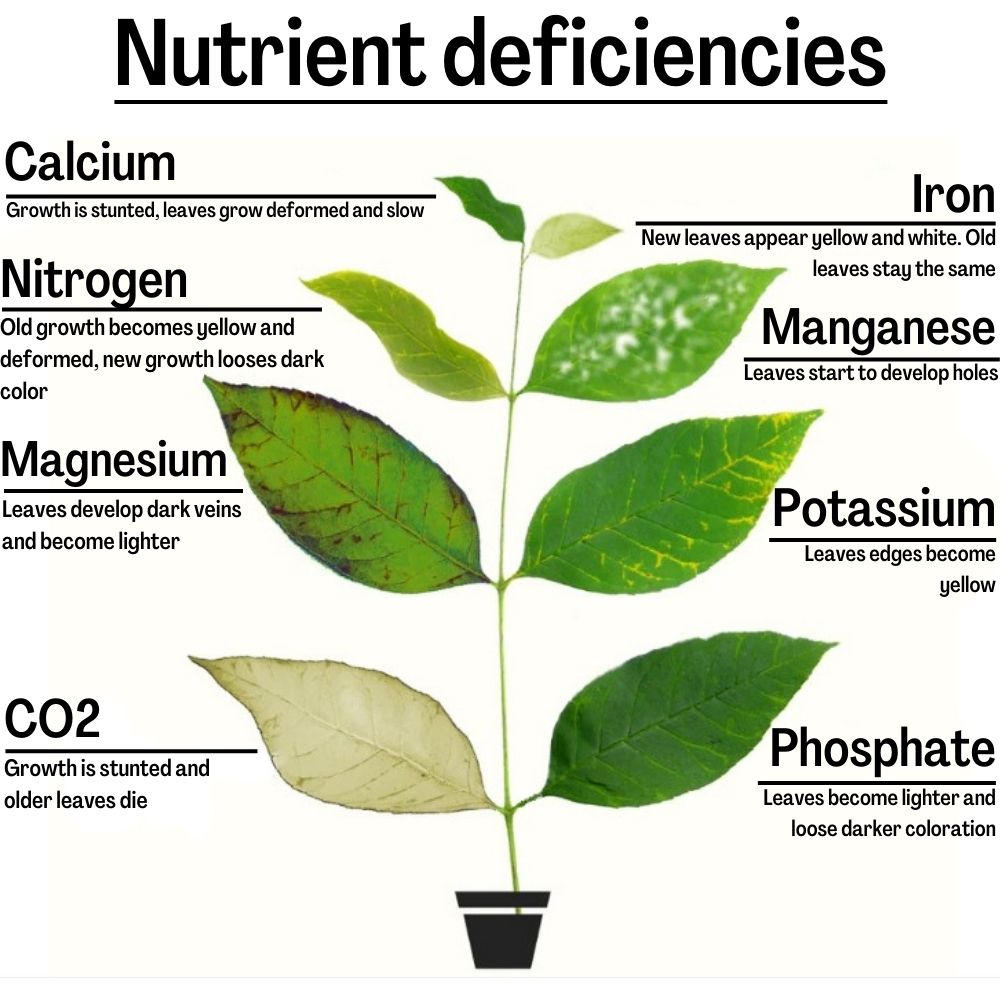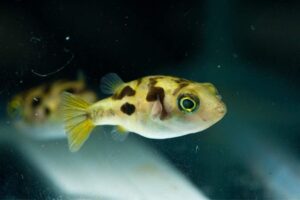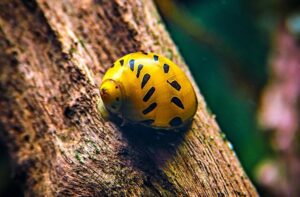
10 Common Reasons Why Your Aquarium Plants Are Dying

Writer at The Aquarium Keeper
There can be countless reasons why your aquarium plants are dying. If you are a beginner in the fishkeeping world, it can be a scary scene to see your newly purchased aquarium plants slowly evaporating. Just as with any aquarium fish, plants also need certain conditions to thrive and grow, and early in the fishkeeping hobby a lot of people tend to make mistakes, that harm aquatic plants in their aquariums.
Fear not, mistakes are common in this hobby. In this article, we will break down the 10 most common reasons why your aquarium plants are dying, and also provide solutions to every reason listed. Keep reading!
Melting
If you have never heard of aquarium plants melting, here is what it means: whenever you introduce new aquatic plants to your tank, these plants take time to adjust to new conditions. In most cases, the conditions from their old environment are different (temperature, pH, lightning), or maybe these plants were grown emersed, nevertheless plants will use nutrients from their older leaves to adjust, making those leaves or part of the plant “melt”. It is a process when part of your plants are dying.

Melting is very common in new tanks, especially ones, that have not been cycled. Also, low CO2 levels can be a reason for melting too, because if a plant came from an environment that had a lot of CO2, it will need time to properly adjust. High ammonia levels are bad for plants and can cause extensive melt too. In most cases, it takes 2-3 weeks for plants to adjust to their environment. To ensure better plant transition to a new environment, follow these guidelines:
- If you have big chunks of plants, try to separate them into smaller individual plants. This will ensure that all the plants will have enough lightning and will adjust more easily.
- Try lowering your aquarium water temperature. Lower temperature slows down aquatic plant metabolism, which means they will require less CO2.
- Use liquid fertilizer. You should use both wide-spectrum fertilizer and CO2 fertilizer. Wide spectrum fertilizer will ensure that your plants will get all the right nutrients, while CO2 will replenish the deficiency your plants are feeling in the transition process. At first, your plant does not have a good rooting system, which means it can’t get enough of the right nutrients through its roots. That is why you need fertilizer because plants can also absorb nutrients from leaves.
- Trim the melting parts away from your plant. This little action will encourage your plant to grow and at the same time removes potential ammonia source (rotting plants create ammonia).
Bad Lightning
All aquarium plants are different and require the right amount of lightning. Some need very little to thrive, others need extensive hours of lightning. Your plants may be dying because of bad lightning, either they have too much of it, or not enough. Light deficiency symptoms can be slow growth and yellowing leaves.
On the other hand, too much light can cause algae to appear in your aquarium. If your plants are getting a lot of light and at the same time do not have enough nutrients and CO2 to match that light quantity, your plants will start dying. Your plants will not be able to absorb all the light and nutrients, which means there will be an opportunity for algae to form and compete for nutrients. Common symptoms of too much light are overgrown leaves, yellowing leaves, and algae.
The simplest solution is to just do extensive research about certain plant requirements. As we mentioned before, some plants need more light, while others don’t. It is up to you to do enough research so that you could create the right environment for your plants. The worst thing to do is to just buy plants without knowing anything about them.
Bad Water Parameters
Your aquarium water temperature and pH drastically impact how your plants are doing. If the conditions are different from the ones your plant prefers, it will not thrive, and probably eventually die. Although most plants tolerate a wide range of different temperature levels, mainly you want to do research before buying an aquatic plant. Always make sure that your aquarium inhabitants can also tolerate the same water requirements just as your plants or they also might die if you make any changes.
pH is also a crucial metric that affects plants. Generally, if the pH is lower is 7.0, it means that the water is neutral. If the pH is lower than 7.0, it means your aquarium water is acidic, and if the pH is more than 7.0, it means the water is alkaline. You should always try to keep your pH between 6.8 and 7.8 because most aquatic creatures and plants do well in this range. We highly recommend doing research on aquatic plants before you make a purchase! Lack of research can result in your aquarium plants dying after some time.
Too Much Filtration
Without filtration, ammonia will form in your aquarium and plants will get hurt. There is a good saying in the aquarium hobby, that “you can’t have too much filtration”. We would like to argue with this statement. Filtration is very important for keeping your aquarium clean and healthy. It helps by reducing ammonia levels in your aquarium. But a filter, that provides too much flow rate can cause problems in your aquarium and harm your plants, here is why:
- Firstly, a high flow rate will definitely be stressful for your aquarium inhabitants. They might get blown away or the current might be too strong for your fish. A high flow rate can also stir up your aquarium, which will make it cloudy, resulting in plants not getting enough light. Plants will have a harder time rooting in your substrate when a higher flow rate is present.
- Secondly, you will not have a bigger beneficial bacteria colony if you have a stronger filter. The size of a beneficial bacteria colony solely depends on the amount of ammonia that is present. Your fish will produce the same amount of ammonia with or without a filter. Regardless of the size of the filter you have, you will still have the same amount of beneficial bacteria in your aquarium.
- Thirdly, if the filter is too big, it becomes harder to deliver the water with ammonia to your beneficial bacteria. Your filter has to be sized accordingly. If not, some level of ammonia will be present in your aquarium, which can hurt your plants.
There is a good rule of thumb in the fishkeeping hobby, that people should get at least 6 times more filtration than their aquarium size. So if you have a 20-gallon aquarium, the amount of filtration you would need is at least 120 gph (gallons per hour). We believe, that 2x filtration of your tank size is enough. With our recommendations, you don’t push your filter to the limits, and at the same time, you probably will not have a filter flow that is just too strong for your aquarium. This little adjustment can help your plants establish faster and prevent them from dying that easily.
Too Much Excess Waste
Excess waste is very bad for your plants and inhabitants. Food leftovers, fish poop, and rotting plants can cause high ammonia in your aquarium, and sometimes it can be too much for your beneficial bacteria. High ammonia levels can lead to your aquarium plants dying.
High ammonia levels can indicate, that your aquarium is overstocked, your beneficial bacteria colony is underdeveloped, or you do have not enough filtration. The right solution in this situation is to test for ammonia levels in your aquarium. If they come back high, remove excess waste from your aquarium and do frequent water changes.
To avoid this kind of mistake, always do some research before you buy filters, and aquatic creatures. Make sure they are suitable for your aquarium size.
Not Enough Nutrients
Aquatic plants need a lot of different nutrients to thrive. These nutrients come from the right substrate, fertilization products, and CO2 injections. Different plants have different requirements, but all of them need nutrients to grow. Here are the common symptoms of certain nutrient deficiencies:
- Iron Deficiency: New aquatic plant growth appears yellow and white, old growth will stay the same.
- Manganese Deficiency: Leaves of your plants will start developing holes and spots, which will indicate that they need more manganese.
- Potassium Deficiency: Your aquatic plant leaves will start to yellow at the tips and edges of the leaf.
- Phosphate Deficiency: Aquatic plants will start losing darker colors.
- CO2 Deficiency: Lack of CO2 will stunt the plant, making older leaves die.
- Magnesium Deficiency: Leaves will develop dark veins and at the same time become lighter.
- Nitrogen Deficiency: Old growth will become yellow and deformed, and new growth will have light green colors.
- Calcium Deficiency: Plants become stunted if there is not enough calcium. New leaves grow deformed.

Look for these signs on your plants, so you would know, what kind of supplements they are lacking. We highly recommend using liquid fertilizer, root tabs, and proper substrate. CO2 diffuser is also a good option, but it is more on the expensive side of this hobby. Liquid CO2 fertilizer is a good alternative to prevent CO2 shortages in your aquarium. Before purchasing any fertilizer for your plants, be sure that it is compatible with your aquatic creatures.
Bad Substrate
To properly grow most plants in your aquarium, you need a good substrate. Small rocks or pebbles as substrate alone are not good, because there are no nutrients in the substrate itself. Also, plants will have a hard time rooting in that particular substrate. If the plants keep getting uprooted and easily moved around, they will take a longer time to adjust, which can result in more plant melt.
When it comes to planting rooting, sand is a better option, but still, there are no nutrients in the substrate. We highly recommend getting special nutrient-rich soil for your aquarium plants. You can put that nutrient-rich substrate on the very bottom of your tank, then top it off with small rocks, pebbles, sand, whatever you like. Planting your plants in this kind of setup will provide them with the right nutrients, and at the same time, they will not be uprooted that easily.
Bad Stocking
There is a possibility, that your plants are dying because of the fish you keep. Some fish species tend to graze on the plants, or constantly uproot them with their movement. It is best to not keep plants, or instead keep very hardy plants with these problematic fish. Here is a list of the most popular fish that pose a threat to your aquatic plants:
- Oscar (Astronotus ocellatus)
- Goldfish (Carassius auratus)
- Common Pleco (Hypostomus plecostomus)
- Silver Dollar (Metynnis argenteus)
- Cichlid (Cichlidae spp.)
Before making any spontaneous decision when it comes to buying aquarium fish, please do a certain amount of research. Little patience can protect you from a lot of trouble and save you money.
Needy Plants
There are a lot of aquarium plants that require much more nutrients, light, and CO2 to thrive. Everything comes down to your setup and budget. If you started with high-tech plants and now are wondering, why are they dying, it is probably because they need way more than your setup can offer. We highly do not recommend buying needy aquarium plants if your aquarium does not have good lighting, a nutrient-rich substrate, or a CO2 diffuser. There are a lot of other amazing aquatic plants that grow just fine with lower requirements.
Here is a short list of one of the hardiest plants in the aquarium hobby. Most of them are easily found in any aquarium local store and can grow in low-tech setups:
- Anubias: There are a lot of different variations of this plant. Some species have smaller leaves like Anubias barteri var. nana, and others have distinctive features like anubias nana snow white, which has white leaves. This plant is hardy and can grow attached to rocks, driftwood, and other decorations. You can use glue, that is safe for fish or a string for attachment. This plant can’t be planted in the substrate, be sure not to kill it!
- Hornwort: This plant is one of the fastest growing plants in the hobby. Just like anubias, it can grow attached to something, but it can even grow by just floating around the tank. If you choose, you can also plant it on the substrate.
- Java Fern: Similar to anubias, this plant can also be attached to decorations, stones, and driftwood. It also can’t be buried in the substrate, because it will die.
- Salvinia: This is a fast-growing floating plant, that sucks up all the bad chemicals from your aquarium. It is crucial to have floating plants in your aquarium, because they reduce lightning in the tank, provide shade for the fish.
- Amazon Sword: This plant grows very tall, so it is best to keep it in bigger tanks. Amazon sword tolerates a wide range of water parameters, it can also be planted in the substrate.
Not Enough Maintenance
The final reason on this list is the lack of maintenance. Regular tank cleaning is very important. Basic tasks like doing water changes, cleaning algae, siphoning substrate and other debris, and regularly adding fertilizer can have a huge positive impact on your plants. Lack of maintenance can result in your aquarium plants dying.
Basic regular maintenance reduces ammonia levels, makes it harder for algae to take over, and in general makes your tank cleaner. There are bad reasons why you shouldn’t do maintenance.
Writer's Thoughts
I believe, that everyone should start with plants, that don’t require much. Jumping into the hobby with fancy aquatic plants can lead to wasted money and time. This hobby can sometimes be punished, which is why research is needed before making any purchasing decision.
If you enjoyed reading our article, please feel free to share it with your friends by clicking the social media buttons below:



Pea Puffer: Adorable Little Hunter, Everything You Need To Know



